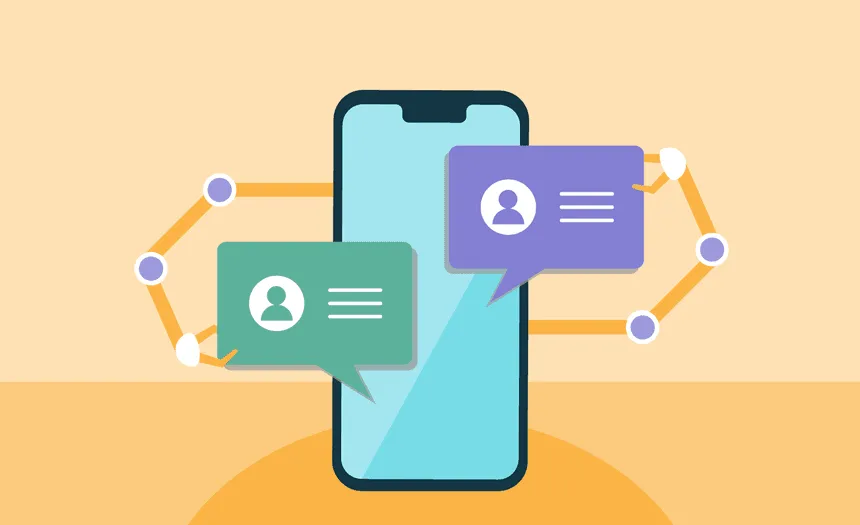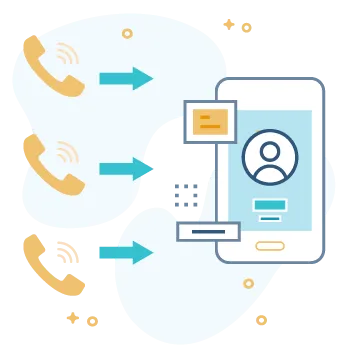Transforming Global Communication: The Future of SMS, MMS, and Voice Services

The technological world is rapidly advancing. The global communication landscape is undergoing a transformative shift. The evolution of global communication extends beyond traditional ways. It establishes a new era of connectivity.
The SMS, MMS, and voice services are continuously modifying and transforming. The future of the latest technologies will redefine the way we exchange information. These technologies include 5G and artificial intelligence. Continue reading to delve into the exciting innovations and perspectives that lie ahead. Get to know more about what SMS, MMS, and Voice Services are and how they influence our lives.
What is SMS?
SMS or Short Message Service is a text messaging service. It is available on smartphones, mobile phones, and other mobile devices. Using SMS, you can send short and text-based messages to anyone you want. SMS is commonly used all over the world, and it is a basic form of communication. It can be considered a quick as well as efficient way to exchange information between different mobile devices.
Evolution of SMS
The evolution of SMS has been a remarkable journey. It transformed from a simple text messaging system to a prevalent part of global communication. The origin of SMS is dated back to the 1990s. It was initiated as a means to send short messages to different cell phones. These text messages are limited to a strict character limit of 160 only. The use of SMS was initially limited to essential alerts and notifications. Over the years, SMS gained attention as a primary mode of personal communication. As mobile technology advanced, these evolved from basic text exchanges. The advancement led to the addition of multimedia elements. It was done through MMS or Multimedia Messaging Service.
The arrival of smartphones further revolutionized Short Message Service. They introduced messaging applications with more features. Furthermore, it also integrated SMS into a wider communication platform. Despite the rise of different messaging apps, SMS maintained its significance. It is so because of its global compatibility across various devices.
SMS in Everyday Life
Bob Smith, founder at starlinkzone, said, “SMS has become a critical and integral part of our everyday life. It has integrated seamlessly into our regular interactions and conversations. From quick conversations between family and friends to receiving important notifications, SMS has influenced our lives a lot. SMS has penetrated into various aspects of our personal and professional world. Its universal accessibility and simplicity make it a go-to tool to convey information. Whether it’s sharing updates or coordinating plans, SMS plays a versatile role in communication. It bridges the distances and connects people across a diverse range of contexts. “
Role of SMS: Past, Present, and Future
Vicky Cano, Chef & Recipe developer at mealfan, said, “The role of SMS in mobile communication has gone through a significant shift over the years. In the early days, SMS was a simple text messaging system with a 160-character limit. It was primarily used to exchange brief messages. With the advancement of mobile technology, SMS has evolved into a critical player in interpersonal communication. It adapted and included multimedia features via a Multimedia Messaging Service or MMS. In the present age, SMS prevails as a key communication tool. It complements the rise of messaging apps and continues to serve as a global means of reaching people worldwide.”
Looking forward to the future of SMS, it involves integration with different technologies. These technologies may include leveraging the 5G capabilities for improved multimedia experiences. It ensures its continued adaptability and relevance in the ever-changing world of mobile communication.
What is MMS?

Multimedia Messaging Service (MMS) is an advanced communication tool. It allows users to seamlessly exchange multimedia content through their mobile devices. Unlike traditional Short Message Service, MMS allows the transmission of not only texts. It also helps to convey images, audio files, videos, and contact cards. MMS improves the messaging experience. It provides a more dynamic and richer means of communication. It further allows the users to share audio and visual content with family, friends, or colleagues. This versatile service has become a significant part of modern messaging. It also contributes to a more expressive and engaging form of mobile communication.
Evolution of MMS: A Multimedia Journey
Richard Adams, Lead Researcher at WithinHome, said, “The development of Multimedia Messaging Service (MMS) has played a very progressive role in the domain of the digital industry. It has proven to be a transformative element in smart communication. It has emerged as an extension of conventional text-based messaging. Plus, MMS marked a notable leap by allowing users to share a broad range of multimedia content. It includes images, videos, and audio clips. Over the years, technological progress has driven MMS into a fine platform. It offers users a swift and dynamic path to communicate through multimedia elements. From its humble inception, MMS has developed to become a vital part of communication. It controls how we share and experience content in our digital lives.”
MMS in Everyday Life: Enhancing Communication Experiences
MMS plays a crucial role in our daily communications in improving interaction experiences. It goes more than just words in a text message. With MMS, individuals can share information and different emotions, expressions, and moments. Since these services have visual and audio content-sharing options, they enhance the content-sharing experience. You can share your vacation snapshots and also celebrate milestones with family and friends with MMS. Use this versatile tool for expressive, professional, and personal communication and enrich the way you connect with people in the digital age.
Role of MMS: Past, Present, and Future
PJack William, founder of GreatLakesTinyHome, said, “The function of Multimedia Messaging services (MMS) has marked an incredible evolution. It started making progress from its advent to the present day. Introduced initially as a medium for sharing necessary multimedia content, MMS has developed into a refined communication tool. In the past, it described a leap forward in multimedia messaging capacities. In the present, MMS proceeds to be an essential element of mobile communication.”
Moreover, it seamlessly incorporates multimedia aspects into our conversations. Looking to the future, MMS is composed to advance further. Plus, it is expected to adapt to technological improvements. Besides this, it potentially incorporates augmented reality (AR) and virtual reality (VR) aspects. Thus promising an even more interactive and engaging communication experience.
What are Voice Services?

Jessica Chase, Vice President at Premiertitleloans, said, “Voice services refer to an essential element of modern communication. It enables users to engage in real-time discussions through audio messages. Whether in the form of conventional phone calls or the incorporation of voice-activated technologies have developed. Voice services such as virtual assistants meet users’ unique and customized requirements.
In everyday life, voice services allow painless transmission. It also gets rid of the limitations of written text. As technology continues to progress, voice services are anticipated to play an important role. It is not only important in interpersonal communication but also in the integration of voice controls for smart appliances. Plus, it also helps with navigation and a variety of applications. It contributes to a more easy and intuitive user experience.”
Evolution of Voiceover: Shaping Auditory Interfaces
The development of voiceover technology has honoured a transforming journey in auditory interfaces. It was initially introduced to improve accessibility for visually impaired users. However, voiceover features have developed into refined systems that deliver vocal feedback. Plus, it helps in navigation guides across various digital platforms. Voiceovers have transformed the digital industry. It is helpful in many ways, from basic screen-reading roles to all-around voice-controlled interfaces. Besides this, the growth of voiceover technology emphasizes a devotion to inclusivity and user-friendly design.
Voiceover in Everyday Life: A Seamless Auditory Experience
Kartik Ahuja, Marketing Manager of Thailand Nomads, said, “In our daily lives, voiceover has evolved as a crucial part of the digital experience. It seamlessly blends into our appliances and applications. Whether it’s directing smartphones or obtaining voice directions in navigation apps, voiceovers are helpful. Plus, it helps interact with smart home appliances. Voiceover technology improves accessibility for users of special abilities. Beyond accessibility, it facilitates performing daily tasks. Moreover, it contributes to a more intuitive and hands-free interaction with the ever-expanding industry of digital technology.”
Role of Voiceover: Past, Present, and Future
The function of voiceover technology has developed dynamically over time. In its initial days, it often served as a resource for accessibility. It was helpful in ensuring that everyone could experience digital content. In the present era, voiceover has developed its role, evolving as a mainstream feature. It plays a critical role in different applications, virtual assistants, and intelligent appliances. Looking forward to the future, voiceover plays a significant role in the growth of natural language processing. Plus, it offers more subtle and context-aware interactions. As technology evolves, the role of voiceover is anticipated to continue developing.
Conclusion
In the future, communication means will progress to offer smart solutions. Plus, safer means of communication are also expected. With advanced security measures, voice services should focus on user privacy. Upcoming SMS, MMS, and voice service versions should integrate a smooth user experience. Moreover, with the help of artificial intelligence, we can also anticipate more personalized communication services. It can be helpful in making the whole multimedia experience interactive and immersive.